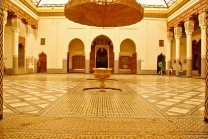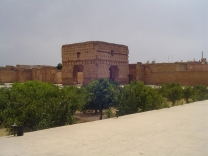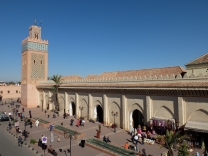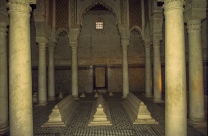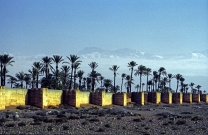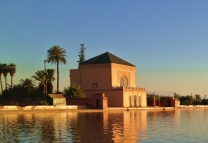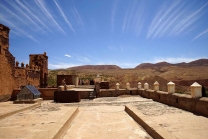No video yet

Jemaa el-Fnaa
Jemaa el-Fnaa (Arabic: ساحة جامع الفناء saaHat jamaaʻ al-fanâʼ, also Jemaa el-Fna, Djema el-Fna or Djemaa el-Fnaa) is a square and market place in Marrakesh's medina quarter (old city). It remains the main square of Marrakesh, used by locals and tourists.
Name
The origin of its name is unclear: jamaa means "congregation" in Arabic, probably referring to a destroyed Almoravid mosque. Fnaʼ or finâʼ can mean "death" or "a courtyard, space in front of a building". "finâʼ in Arabic commonly means "open area"; a straight translation would be "the gathering/congregation area". Other meanings could be "The assembly of death," or "The Mosque at the End of the World". Another explanation is that it refers to a mosque with a distinctive courtyard or square in front of it. A third translation is "assembly of the dead", referring to public executions on the plaza around 1050 AD.
History
Marrakesh was founded by the Almoravid Dynasty 1070-1072. After a destructive struggle, it fell to the Almohads in 1147. Following this, Jamaa el-Fna was renovated along with much of the city. The city walls were also extended by Abou Yacoub Youssef and particularly by Yacoub el Mansour from 1147-1158. The surrounding mosque, palace, hospital, parade ground and gardens around the edges of the marketplace were also overhauled, and the kasbah was fortified. Subsequently, with the fortunes of the city, Jamaa el Fna saw periods of decline and also renewal.
The Square
During the day it is predominantly occupied by orange juice stalls, water sellers with traditional leather water-bags and brass cups, youths with chained Barbary apes and snake charmers despite the protected status of these species under Moroccan law.
As the day progresses, the entertainment on offer changes: the snake charmers depart, and late in the day the square becomes more crowded, with Chleuh dancing-boys (it would be against custom for girls to provide such entertainment), story-tellers...





